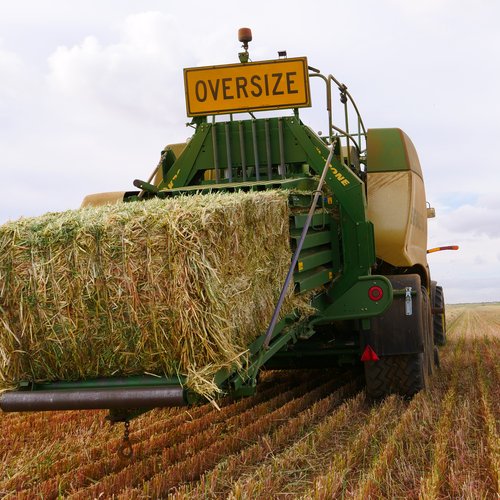For Agri Novatex, silage is about more than wrapping up grass – it’s a piece of Australian history.
The business manufactures the iconic SilaWRAP product, created in 1984 by two Gippsland farmers and one Tasmanian.
The three farmers invented what is now recognised as silage film after observing ensiling practices overseas.
Agri Novatex Australia country manager Brad Power said the difference between Agri Novatex and other silage players was its commitment to local manufacturing.
“Because of the factory in Melbourne, we make the film here which is pretty important because for silage it can go from nothing to everything in a few weeks,” Mr Power said.
“If you were expecting one cut and it turns into three, it’s a long time to wait for a ship to come over.”
Mr Powers said the business is now bracing for the upcoming spring cuts as farmers across the country would be looking to replenish their feed reserves.
“With storage reserves at an all-time low ... I can see there being a large swing towards getting every bit of grass tucked away,” he said.
“It will depend on the growing temperatures in most places but there will hopefully be a second cut and there is talk of a third cut in Gippsland.”
Agri Novatex took over the manufacturing and distribution of SilaWRAP in 2020 and Mr Power said the company doesn’t take the responsibility lightly.
“It (SilaWRAP) is the single biggest brand in the Australian silage market, the correct term is ‘number one selling wrap’. It’s got strong brand recognition and there is a long-established trust in it.”
He said Agri Novatex was very lucky to have onshore manufacturing throughout the COVID-19 pandemic and avoided international shipping delays.
“We don’t rely on international shipping freight, so there is no issue getting containers into Australia. That is our strength.”
When it comes to pit versus bale silage, Mr Power said Agri Novatex hasn’t seen any big change in trends.
The main change was larger on-farm storage, regardless of ensiling method. “So, if they were using pits they do more pits, and if they are doing bales, they do more bales.”
Agri Novatex also sells baling twine, silage pit covers, grain bags, net wraps and inoculates.
“Another key point is that our products are well supported by the team we have,” Mr Power said.
“We sell to stores and they sell to farmers, but we also have area managers who help those farmers and stores understand why silage is important and how that impacts milk in the vat.”
Ben Beattie is the area manager for southern NSW and northern Victoria.
“Ben recently spent the day with a farmer just driving around his paddock learning what the pain points are in his operation,” Mr Power said.
“Ben centres himself around the Albury area but travels long distances for the job and says his area could be a mixed bag.
“It’s predominantly dairy product based but we have a large number of grain bag customers, too,” Mr Beattie said.
“An area like Deniliquin is really mixed because they do broadacre and dairy.”
Mr Beattie said he was getting a lot of questions about plastic recycling and reusing from customers, which is something Agri Novatex is listening closely to.
“There is a bit more emphasis on the origin of a product and what manufacturers are doing to limit their use of virgin plastic material,’’ he said.
“People are certainly mindful of the manufacturing process, and they want to support local manufacturing.”
Mr Beattie said the recycling of silage film was in its “infancy” and customers asking questions was an important first step.
Mr Power said rising on-farm costs have also been changing the way dairy farmers use silage – choosing to invest in their own grass and prioritise a quality product.
“As with everything around rising input costs, we are seeing a focus on maximising on-farm feed and becoming less reliant on buying feed in.
“The cheapest feed is your own feed. People are focusing on quality over quantity and that works well for us,” he said.




